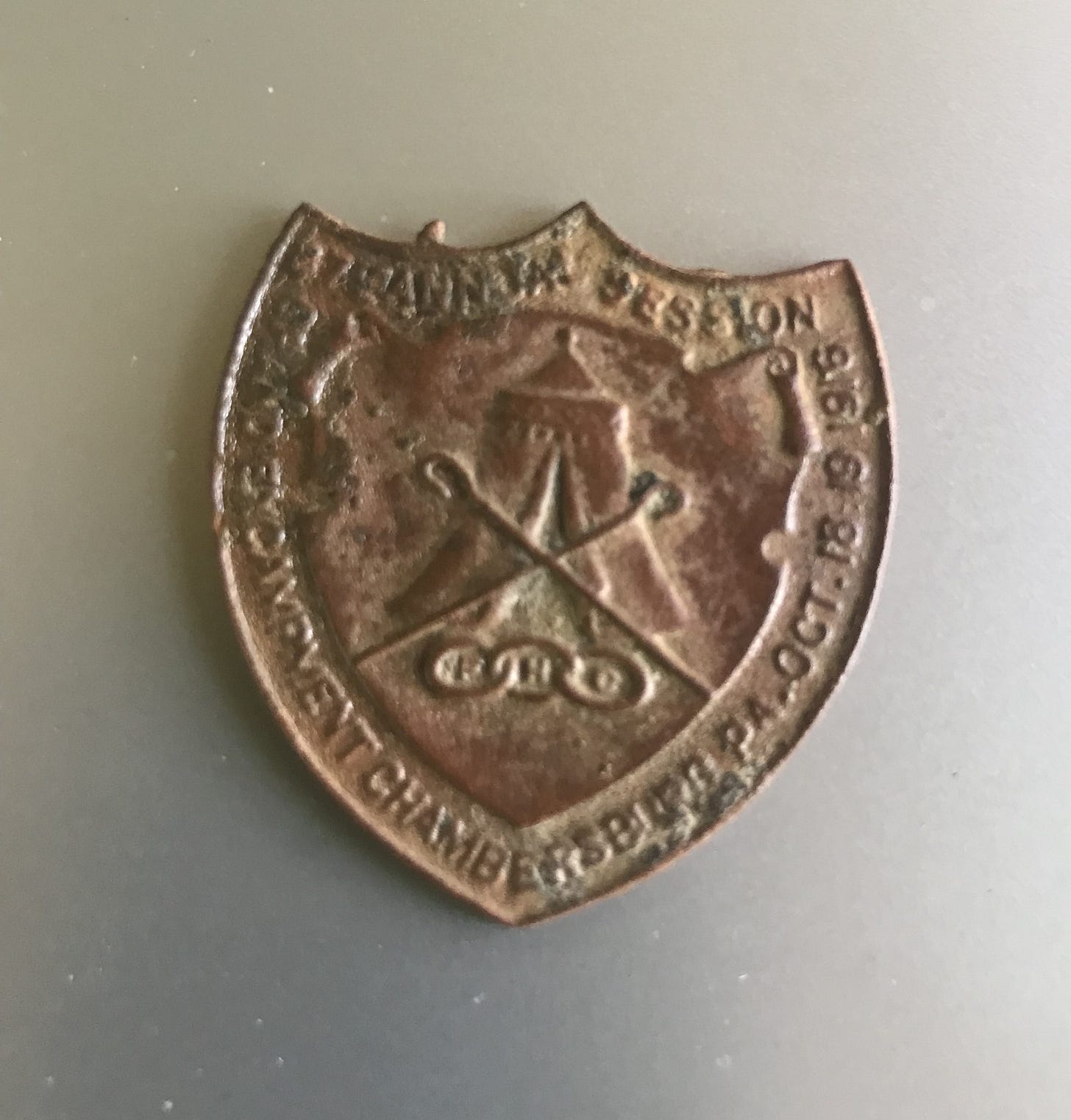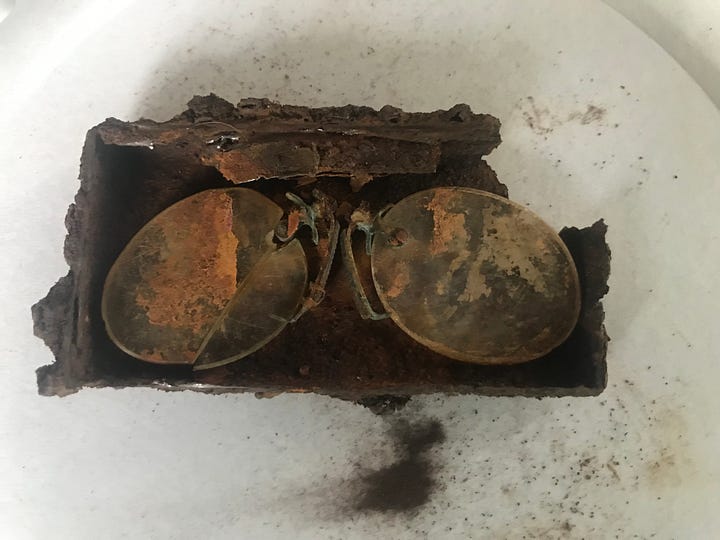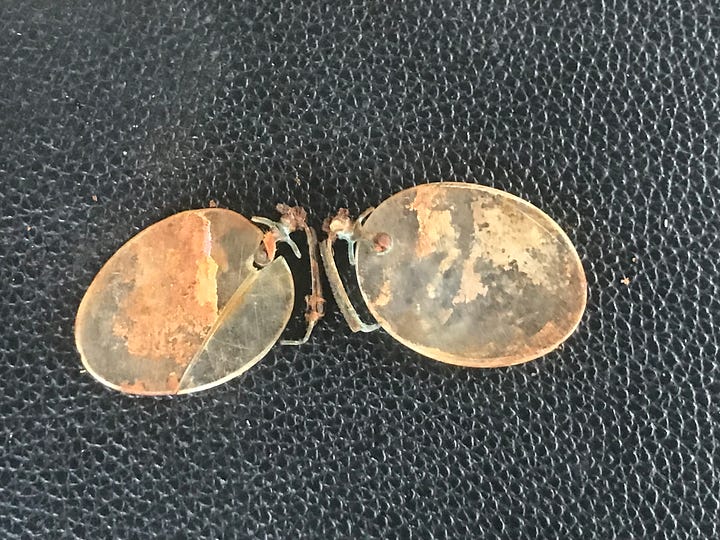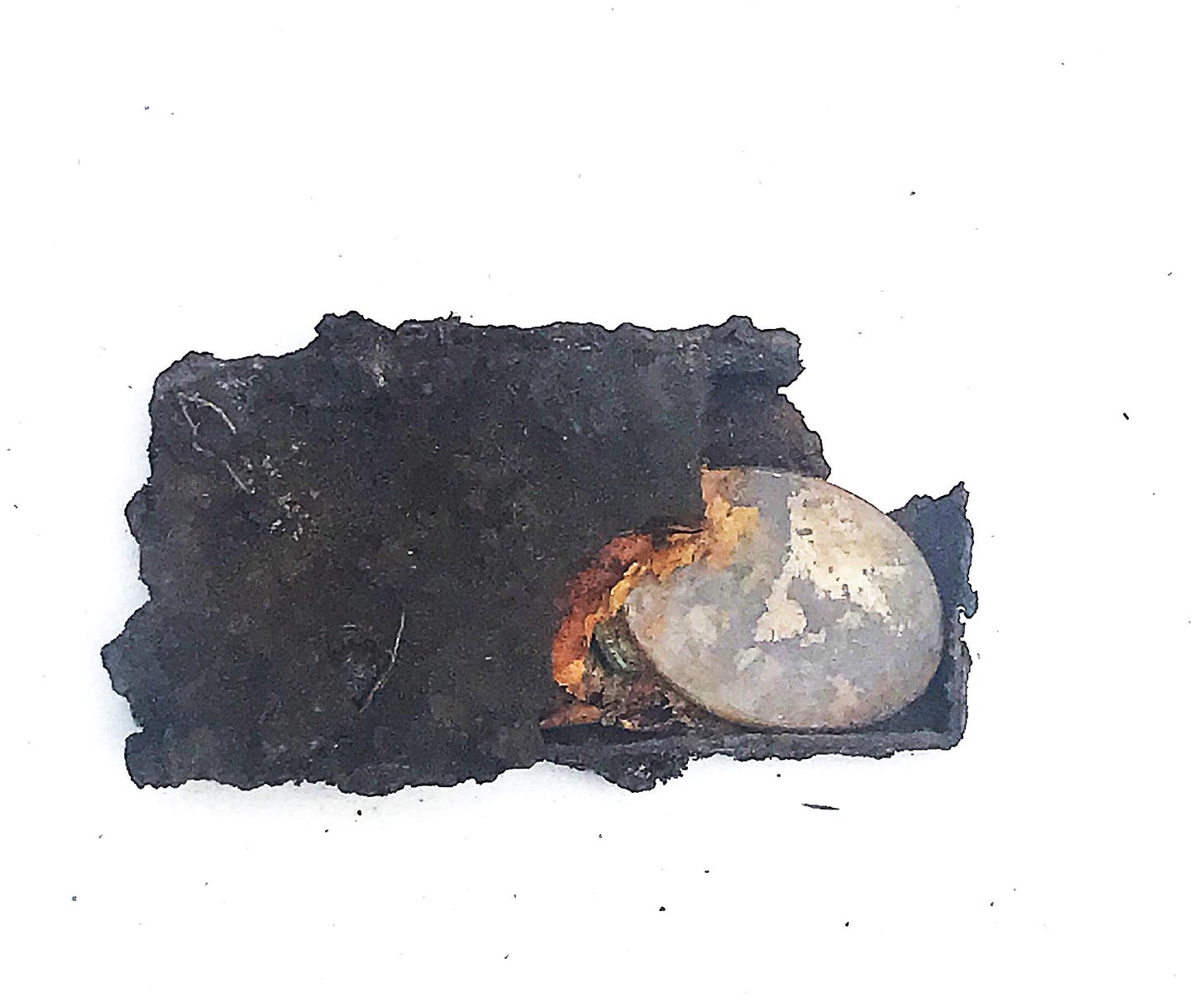
I found this item, which appeared to be a pin, while creek detecting earlier this summer. I brought it home to see if I could find anything on the internet, and most of the results indicated that it was a Knights Templar pin. I decided to post it on a local historical page on Facebook and go answers ranging from Masonic Temple to Order of the Oddfellows.
One reply suggested I take it to the Franklin County Historical Society to see if they could identify it. I decided that was a good idea, and they identified it as an Oddfellows pin for a Convention held in Chambersburg (PA) in 1916. The volunteers at the Historical Society seemed so excited about the find that I decided to donate it. In return they promised to feature it in their next newsletter and send me a copy, which I had hoped to include here, but apparently, it’s not out yet.
The Order of the Oddfellows is an international fraternity of lodges that was originally documented in London in 1730. The first lodge in the USA was established in Baltimore in 1819, and conventions, or encampments, began a few years later, resulting in this pin being from the 87th annual session in 1916.
The Historical Society found a newspaper article about the convention that mentioned that 800 visitors attended the encampment and parade. There were about 1200 uniformed Oddfellows in line with about 11 musical bands from Chambersburg, Harrisburg, Shippensburg, Smithsburg, and Williamsport, among others.
I found this amazing pair of glasses, still partially enclosed in a steel or iron (hard to tell at this advanced stage of decay), in mid-July in a local state park. When I first pulled this out of the ground, I could see what I thought was a mirror, so I assumed that it must have been a woman’s compact, but I’ve never found a rectangular compact. After a little bit of basic cleaning, I realized it was a pair of glasses in a metal case. I brought them home and removed the broken lid, and realized that I had found a pair of glasses that at first glance appeared clearly for a very small person or child because of their tiny size. Closer inspection revealed that they probably had a folding aspect, with a swivel/spring at the top that connected to two lenses and allowed them to fold down into the case, or open for an adult to use. There was no apparent sign of this swivel nose-piece when I opened the case, so they were probably already broken when they were discarded or lost.


A bit of research revealed that these were in the Pince Nez style of glasses. Pince-nez are a type of glasses popular in the late 19th to early 20th centuries that are supported without earpieces by pinching the bridge of the nose. The name comes from the French pincer “to pinch”, and nez “nose”. Considering other things that I found nearby (suspender clips, Indian head pennies), I assume these are from the late 1800’s to early 1900’s and they may have come from one of the tenant houses that once existed in the area.





Definitely update us when the Historical Society newsletter gets release!